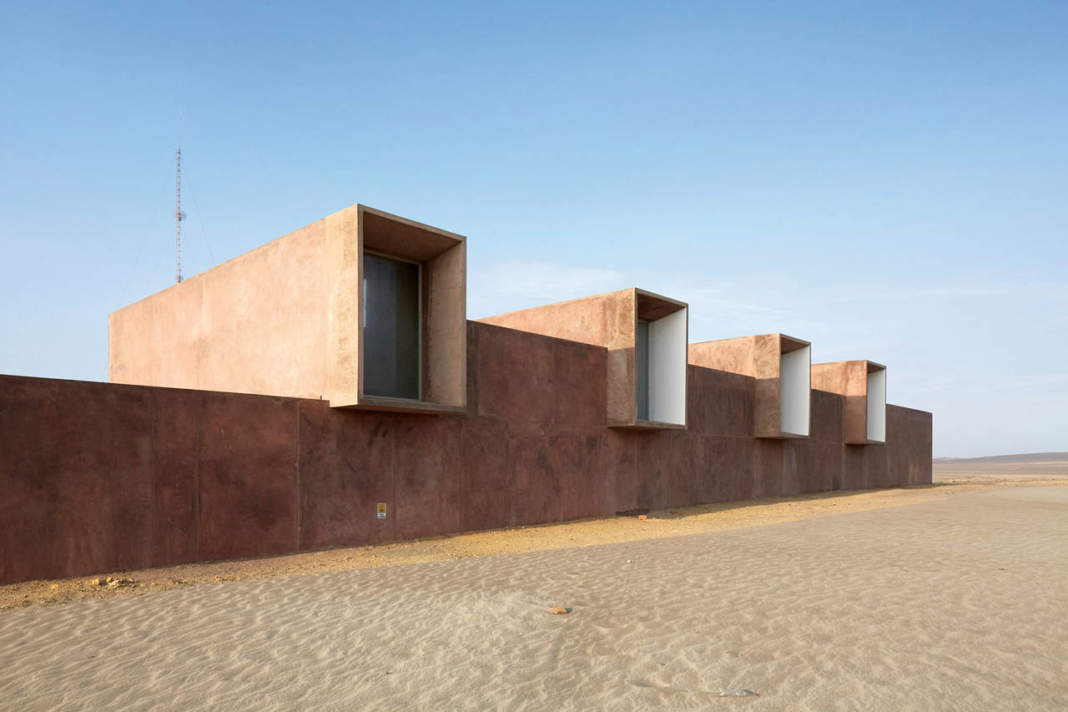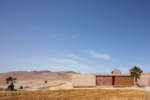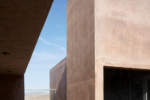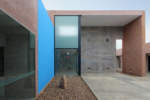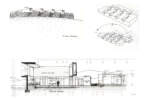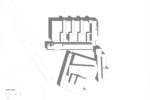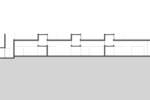architect: Barclay & Crousse Architects
location: Lima, Perù
year: 2016
The project by Barclay & Crousse Architects is implemented practically on the ruins of what was its predecessor, destroyed by an earthquake in 2006. It retakes its rectangular geometry and compactness. A crack or flaw breaks in this volume, separating the functions of disclosure of the museum as workshops, meeting rooms and services dedicated to the conservation of archaeological heritage.
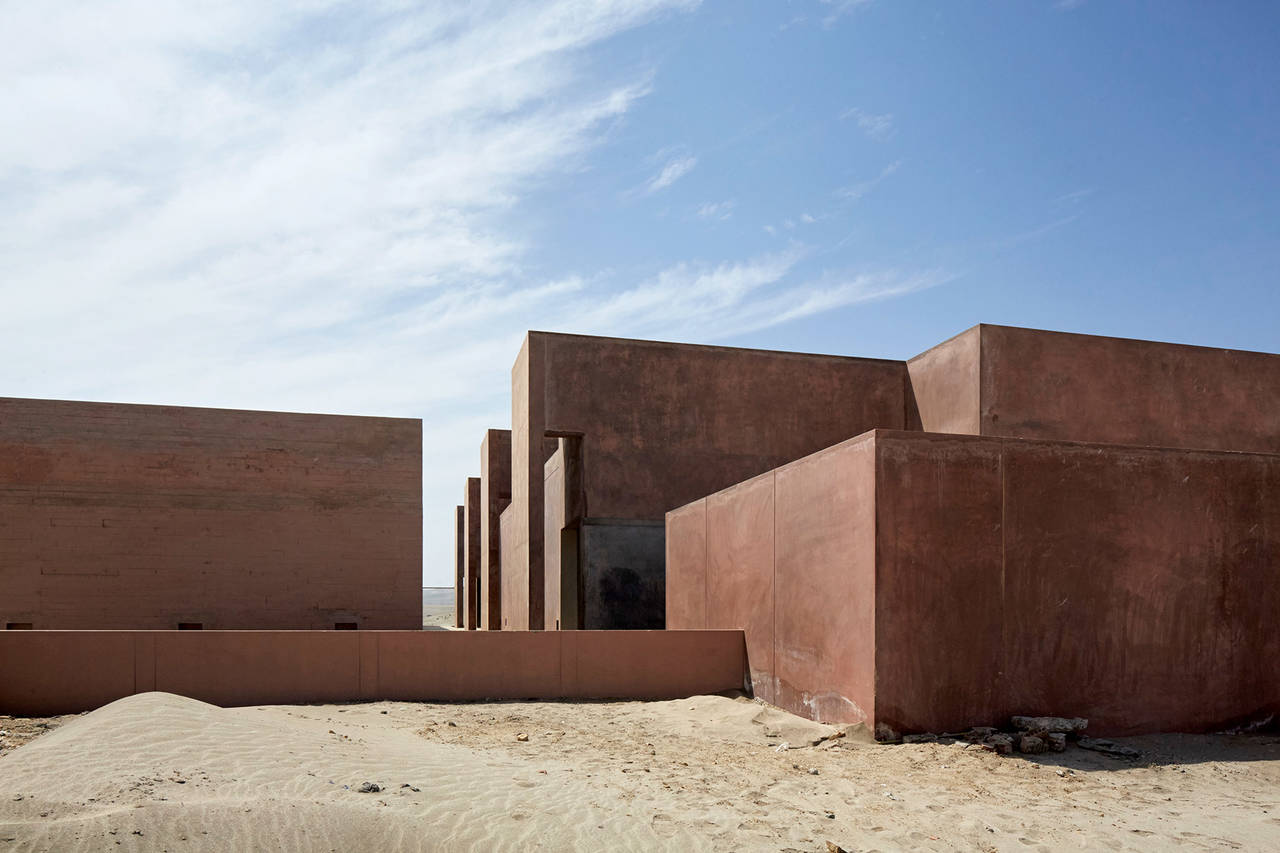
The access to the different spaces of the museum is done by this "crack": open spaces that frame portions of the landscape and create the necessary privacy to live in the vast desert. Inside the museum, is explored a seemingly contradictory hybridization between the labyrinthine spatiality and spiral path used by the ancient Peruvians and contemporary spatiality, smooth and transparent.

Environmental requirements of the Paracas Desert and the museologicals collection requirements are solved with a "device environmental correction", that defines the architectural and museum party. The device consists of a lamppost run, under which are the transition spaces between exhibition halls or circulation spaces, according to the needs and his position in the project.
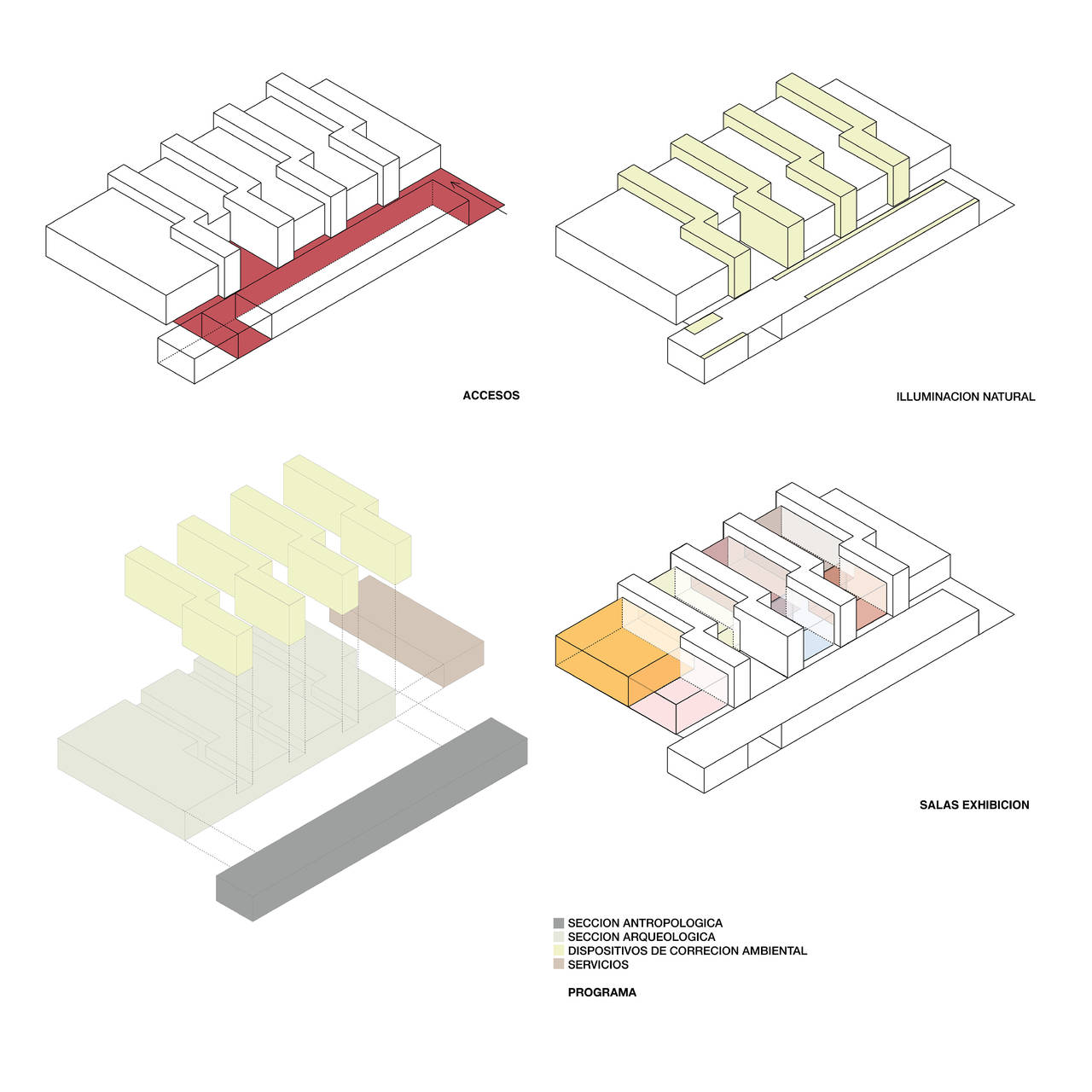
This device allows to control natural light, artificial light, natural ventilation and cooling of the different environments. Its geometry reinterprets the serie and the gap characteristic of the Paracas textiles, which were his most outstanding technological and artistic expressions.
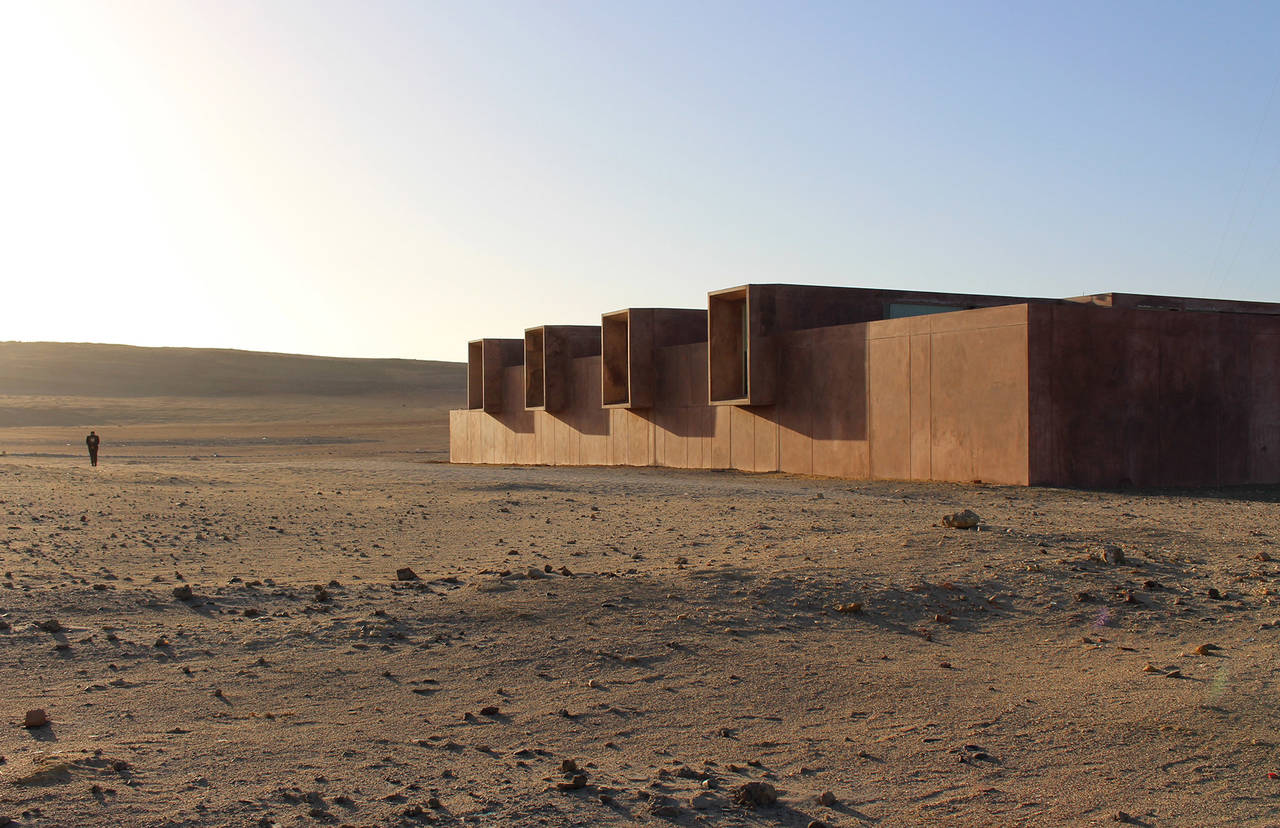
The building is constructed entirely with pozzolan cement, resistant to salt desert. The exposed concrete and cement grinding that constitute its materiality, acquire a natural reddish color that blends with the neighboring hills. The patina left by builders in the polished concrete that surrounds the museal rooms give to the museum a ceramic look that resembles the pre-Columbian ceramics (huacos) that are exposed inside.
info
location: National Reserve of Paracas - Ica, Perú
competition: august 2008
project: october 2008 - march 2010
site works: june 2011 - may 2012
opening: july 2016
project authors: Sandra Barclay & Jean Pierre Crousse
assistants: Rodrigo Apolaya
structural engineering: Antonio Blanco
client: Spanish Agency for International Cooperation (AECID)
Ministry of Culture
contractor: Consortium Paracas
subuilt surface: 1,170 sqm
main materials: exposed concrete, polished concrete, painting (inner walls), tempered glass with aluminum frames.


